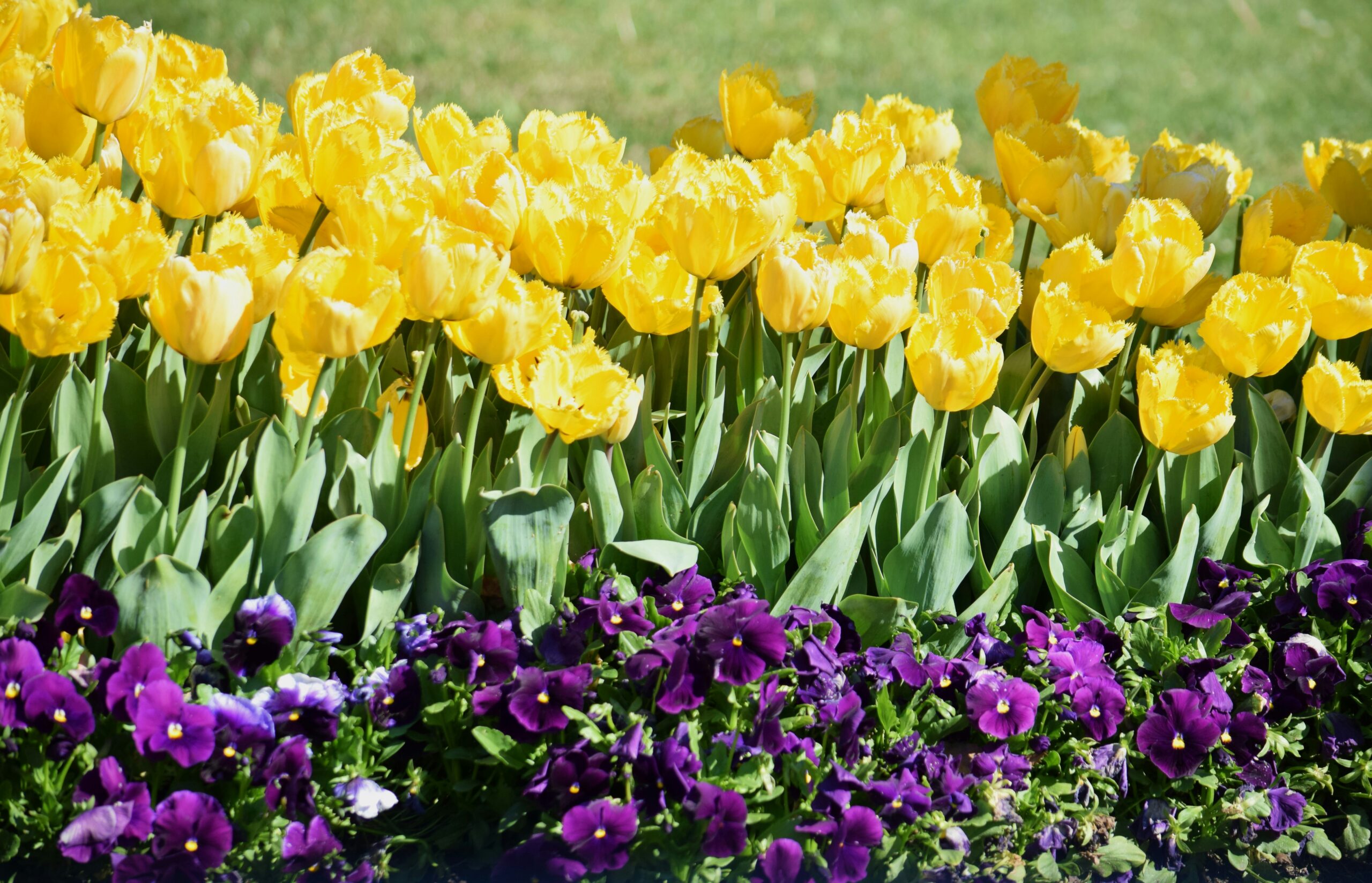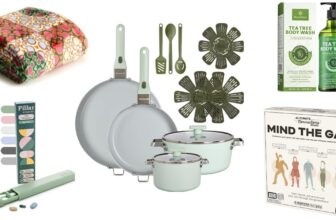
Your Spring Success Starts Long Before the Equinox

Look around any neighbourhood and you’ll spot at least one garden that wakes up weeks ahead of the rest—violets already spreading underleaf, fruit trees blushing with buds, borders humming with colour while yours is still shrugging off winter. That head start isn’t luck or gadgetry, it’s the quiet result of choices made when most people are packing hoses away. In other words, spring triumph is engineered in autumn and fine‑tuned during the coldest months. The ten habits that follow unpack how veteran growers stack the odds: they respect soil biology, choreograph planting dates, and treat winter as a rehearsal rather than hibernation. Choose even one of these habits and you’ll notice the difference next year and weave several together and you’ll be the neighbour everyone asks for cuttings.
1. Start in the Fall
Spring may steal the spotlight, but autumn’s colour is rooted in winter’s roots—and they form best when the ground is still warm from summer. While evenings smell of barbeque’s and woodsmoke, slip perennials, berries and spring‑flowering bulbs such as bluebells, hyacinths and iris flowers for example, into loosened beds. Broadcast a quick cover crop (rye, clover or mustard) where vegetables will grow, those seedlings shield soil from pounding rain, then compost themselves into green manure. Finish by broad‑forking heavy patches so winter water drains instead of pooling. Come spring’s first warm weekend, your plants will already have a quiet head start while late starters are coaxing out reluctant seedlings.
2. Map Your Microclimates Before You Buy a Plant
Your garden is not one climate—it’s a patchwork quilt. The sun‑baked strip beside the driveway might be four degrees warmer at dawn than the frost pocket behind the shed; the lawn edge that floods for a day after rain will stress a lavender that would thrive just three metres upslope. Walk your space morning and evening across a month, noting where dew lingers, where snow melts first, where wind whips through a gate. Jot temperatures with a cheap aquarium thermometer and mark a simple sketch. When you finally browse the nursery, match each plant to a known niche instead of hoping the niche will cooperate. That single exercise saves countless pounds in lost seedlings and trims months off the trial‑and‑error learning curve.
Microclimate Fast Hack: Leave those thermometers in place until early spring and record dawn readings weekly. A consistent five‑degree swing between beds only a few paces apart is normal—knowing it lets you position early bloomers where they’ll actually open early.
3. Treat Soil Like a Social Network for Roots
Healthy soil is a living city: bacteria swapping nitrogen, fungi delivering phosphorus, earthworms aerating side streets. Pros feed that city in courses, not dumps. In late autumn, they shred fallen leaves straight onto beds; in mid‑winter they layer finished compost and as sap rises, they side‑dress with worm castings. Each layer keeps the underground conversation flowing. If you’ve never tested your soil, post a sample to the local extension service—it costs less than a takeaway coffee and spares years of random amendments. Adjust pH, sprinkle missing minerals, mulch deeply, and resist the urge to till. By the time warm weather returns, roots will cruise through a five‑star neighbourhood instead of clawing through compacted dust.
4. Timing Beats Muscle Every Time
Seasoned gardeners look relaxed because they outsource willpower to a calendar. They prune deciduous trees while sap flow is low, spread corn‑gluten meal two weeks before weed seeds germinate, and start tomato trays based on daylight hours rather than a public holiday. Pull out your phone now, add local frost dates, then schedule ten‑minute tasks on quiet weekday evenings. Five minutes hardening seedlings every afternoon beats one heroic rescue mission after a freak cold snap. Put simply: disciplined timing prevents panicked toil.
5. The Bulb Sneak Attack – Pocket‑Sized Gold
Here’s a trick gardening veterans deploy while most folks declare winter, the gardening off‑season: tucking miniature daffodil bulbs into rock‑garden crevices, patio pots, and forgotten corners only ten centimetres deep. They slide where full‑size varieties sulk, then erupt in gold precisely when winter greyness has overstayed its welcome. Thirty minutes of planting in late autumn turns into spontaneous applause from passers‑by in early spring—no special fertiliser needed, and certainly no extra weeding.
6. Layer Plants Like a Pastry Chef Builds a Mille‑Feuille
Great gardens read like layered desserts.
Snowdrops hand the baton to crocuses, which cede the stage to early tulips before foxgloves and salvias steal the summer show. Underneath, self‑sowing annuals blanket fading bulb foliage and block opportunistic weeds. Start with the deepest‑rooted species, tuck shallower companions above, and stagger bloom times so something interesting happens in every fortnight. The result is a bed that looks full at the end of winter, glorious in spring, and still engaging when high summer arrives.
7. Use Winter as an Ally, Not a Villain
When temperatures drop, casual gardeners hibernate; pros treat the cold months as research and development. Tools are sharpened, handles sanded and oiled, pots disinfected, irrigation lines drained. Seed catalogues turn into storyboards, while cold frames and low tunnels stretch the salad season by six weeks on either side.Even a tiny courtyard can host a hoop tunnel made from PVC conduit and frost cloth. Sow lettuce under it in late winter evenings; you’ll be crunching on your own greens while friends queue at the nursery.
8. Document Everything—Then Edit the Game Plan
Memory is charming but unreliable. Keep a notebook in a zip‑lock bag under the potting bench or download a free garden‑journal app—whatever you’ll open. Record which bed flooded after a thunderstorm, which tomato laughed at your clay, which pepper refused to ripen.
On a quiet winter evening, reread those notes with ruthless calm. Keep the champions, replace the divas, and tweak spacing so air circulation prevents fungal soap operas. Your past garden becomes next season’s personalised textbook.
9. Embrace Beneficial Chaos
Instagram loves straight rows; nature loves organised disorder. Pros let dill bolt because swallowtail butterflies need the nectar. They welcome violets under shrubs as living mulch. They interplant carrots with onions so pests hunting a monoculture buffet end up confused. Dedicate one corner to native wildflowers, leave autumn leaves beneath hydrangeas, and watch the mini‑ecosystem you’ve invited save you from sprays, slug pellets, and late‑night pest patrols.
10. Never Garden Alone—Even If You’re the Only One Holding the Spade
The most successful growers trade seed packets at Saturday markets, swap cuttings over the fence, and lurk in regional forums where someone has already solved the problem you just discovered. Plug into that knowledge highway, ask specific questions, and share your own wins and mishaps. Before long, a grateful stranger will hand you a bag of mystery tubers. Fellowship, as it turns out, is the best mulch for confidence.
Conclusion – Your Spring Starts Today
Every “secret” you’ve read rests on intention, not intensity: observe, prepare, and let biology handle the heavy lifting. Pick one habit—maybe the microclimate walk, the layered soil feed, or a handful of tiny daffodil bulbs—and begin this week. Add another next season. Soon you’ll be the neighbour whose garden wakes first, dazzles longest, and looks effortless doing it. Applause from passers-by is optional; the quiet satisfaction of a plan that worked is inevitable.

Pre-order my debut children’s book
Greek Myths, Folktales & Legends for 9-12 year olds
Published by Scholastic. Available on Amazon
Disclaimer: This content was automatically imported from a third-party source via RSS feed. The original source is: https://honestmum.com/your-spring-success-starts-long-before-the-equinox/. xn--babytilbehr-pgb.com does not claim ownership of this content. All rights remain with the original publisher.







